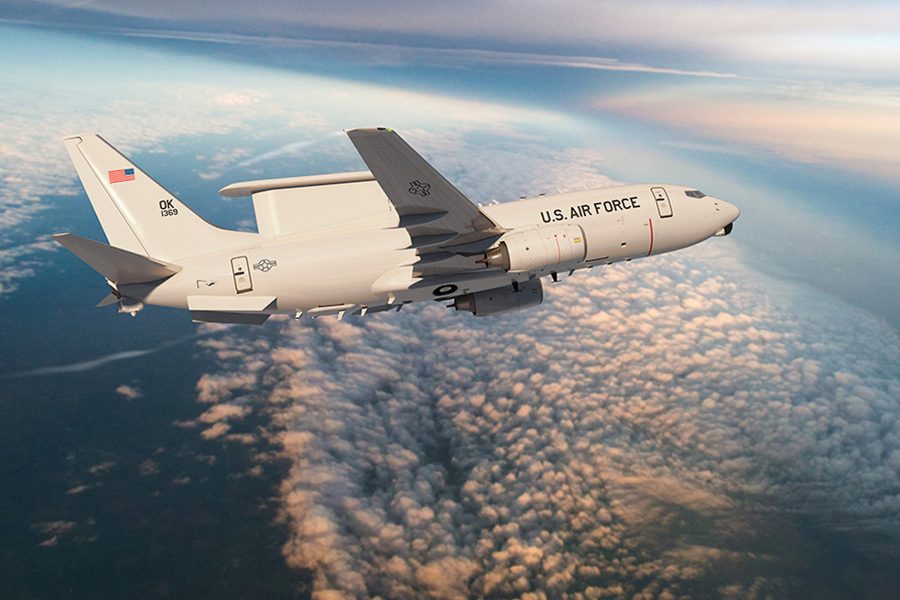If there is anything we’ve learned from the conflicts in Ukraine and Israel—and the growing threats from China, Russia, Iran, and North Korea—it is that massed air and missile attacks are now a fundamental component of modern warfare. This puts our U.S. homeland at risk.
President Trump’s executive order calling for an “Iron Dome Missile Defense Shield for America” to protect against “ballistic, hypersonic, advanced cruise missiles, and other next-generation aerial attacks” is right on target. Achieving that vision, however, is far from simple. Fortunately, the U.S. already possesses the building blocks for such a defense, what we might call a phase one solution. Now we need to get serious about scaling and employing it.
Today’s threats present a “back to the future” moment. During the Cold War, when Soviet nuclear-armed bombers and ballistic missiles threatened the United States and our allies, America invested aggressively, advancing the state of the art in air defense and early warning by establishing defenses including 43 primary and 96 supplementary radar sites, mostly in Canada and the northern U.S., each designed to detect and track threats. An airborne interceptor capability composed of over 800 air defense fighters and hundreds of surface-to-air missiles complemented the early warning systems. But following the Cold War, many of these defenses were dismantled. Although air defenses were given a close look after the attacks of 9/11, the 2023 Chinese balloon fiasco clearly demonstrated remaining deficiencies.
Today’s determined adversaries—China, Russia, Iran, and North Korea—are now aligned, as are their means of attack. These include a range of airborne drones, ballistic missiles, cruise missiles, hypersonic missiles, and even a space-based fractional orbital bombardment system. Many of these weapons have been employed against Ukraine by Russia and against Israel by Iran. Yet those attacks pale in comparison to what China or Russia might be able to muster against the United States in a full-scale conflict.
By holding U.S. targets at risk, adversaries hope to degrade core elements of the U.S. national security enterprise and limit American force projection overseas. By keeping U.S. combat forces focused on homeland defense, they aim to curb America’s capacity and capability to repulse China in a fight over the Taiwan, Russia in Europe, and Iran in the Middle East.
This new global security environment requires a U.S. national defense reset. As in the Cold War, the U.S. military must acquire the sensors to detect an attack and the interceptors to defeat inbound aircraft and missiles. The difference between then and now is technical complexity. Today’s threats are fast, maneuverable, stealthy, and in some cases can transit both air and space.
Defending against such threats requires a modern layered defense. The drone and cruise missile threat highlights the wisdom demonstrated when the U.S. Air Force, backed by Congress, committed to replacing the struggling 46-year old AWACS aircraft with the advanced E-7 Wedgetail early-warning aircraft. Partnering Wedgetail with long-dwell unmanned aerial vehicles (UAV) like MQ-9 Reapers and RQ-4 Global Hawks can provide an effective initial solution. Retrofitted with advanced radars and connected to interceptors—including both missile-equipped fighter aircraft and surface-to-air missiles on the ground and at sea—this sensor-shooter, manned-unmanned solution closes existing coverage gaps, especially in the high north. Indeed, the closest axis of airborne attack for China, Russia, Iran, and North Korea—every one of them—is over the polar region and across Alaska and/or Canada.
Airborne defenses are extremely agile compared to ground-based defenses. They can transit an entire theater in minutes or hours, and can redeploy to other zones as circumstances warrant. Fixed ground-based systems cannot do that. Case in point: U.S. fighter aircraft were crucial to defending Israel against Iran’s missile and drone attack in April 2024. American space-based sensors offer early warning of ballistic missiles, but lack the capability of the E-7 to identify and track most aerial threats. America needs that kind of situational awareness now.
For ballistic and hypersonic missiles, space-based sensors remain the answer, while interceptor systems like Patriot, THAAD, the Standard Missile, surface-launched AMRAAM, Iron Dome, Ground Based Interceptor, and Next Generation Interceptor all provide parts of a solution. Yet though these capabilities are highly effective, with some having been used to tremendous effect in Ukraine, Israel, and the Red Sea, the scale and scope of the threat demands a balance between exquisite capability and mass defensive pragmatism. To intercept thousands of incoming strikes demands solutions, the U.S. needs defensive rounds that can be produced in high volume. No one can afford to spend millions per round indefinitely to fight off low-cost drones and cruise missiles; it’s a defensive calculus akin to running a marathon, not a sprint.
It is easy to scoff at the idea of an “Iron Dome for America,” given the U.S. is roughly 500 times the size of Israel. But the threat is real, and the cost of inaction is too great to ignore. No military obligation is more important or sacred than protecting the homeland. Our lives, liberties, and prosperity depend on it.
Brig. Gen. Houston Cantwell, USAF (Ret.), served as a combat pilot, commander, and strategist, flying the F-16, MQ-9, and RQ-4 aircraft. Over the course of a 30-year career, he spent more than 12 years in the Pacific and European theaters, working closely with U.S. allies and partners, including as part of NATO.


